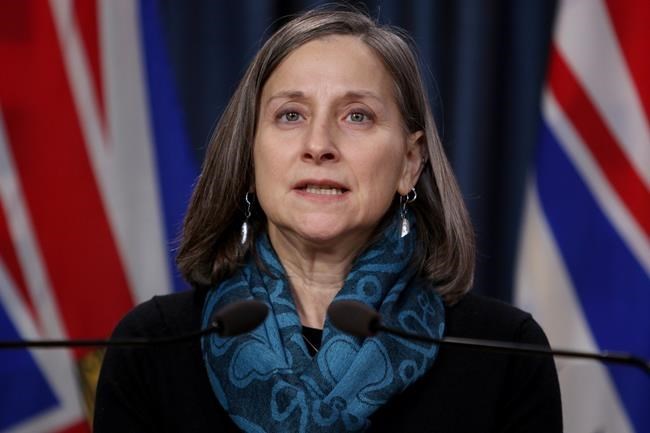B.C. has recorded its highest monthly death toll from drug overdoses for the second month in a row, with 175 illicit-drug-toxicity fatalities in June.
The previous highs were 171 in May, and 161 in December 2016.
About the same number of people died of drug overdoses in June as died of COVID-19 in the first six months of 2020 in B.C.
Premier John Horgan called the spike very disturbing. “We are going to redouble our efforts to bring more resources, to bring more actions across the country, working with the federal government, so that we can wrestle this to the ground, just the way we have all collectively wrestled COVID-19 to the ground.”
B.C. has recorded four consecutive months with more than 100 illicit-drug-toxicity deaths, the B.C. Coroners Service said.
There have been 728 illicit-drug deaths in B.C. this year. The number of deaths in each health authority is at or near the highest monthly totals ever recorded.
“We do know that the supply right now is very toxic,” chief coroner Lisa Lapointe said in an interview. “And of course that contributes to the significant increase in fatalities. It’s just really sad and discouraging.”
Health officials say the overdose crisis, declared a public-health emergency in April 2016, is worsening. It has claimed at least 5,605 lives in B.C. since 2015.
“We know the COVID-19 pandemic has impacted people who use drugs, as it has all British Columbians,” said Lapointe. “Access to key harm-reduction services has been a challenge and our social networks are smaller.”
aIn the midst of two public-health emergencies, Lapointe said, the risks of the illicit market are unmanageable and access to a safe drug supply is essential to save lives. “I would say in addition to a safe supply, which is absolutely critical, we need better access to a comprehensive treatment and recovery system — evidence-based and publicly funded, so that if people are seeking help, it’s available to them and right now that just doesn’t exist,” said Lapointe.
On Wednesday, Island Health announced a four-year, $2-million pilot project with the federal and provincial governments to issue free pharmaceutical-grade opioids to people at risk of overdose in the Cowichan Valley.
Horgan said the province is working on many fronts, proposing amendments to the Mental Health Act to allow clinicians to keep overdosed youth in hospital up to 10 days until they stabilize and have a care plan, attempting to create more recovery and treatment beds, lending the province’s voice to a call from the national police chiefs to decriminalize personal amounts of opioids, and providing a safe drug supply.
While this is not just an opioid epidemic — cocaine and methamphetamine/amphetamine have been detected in many drug deaths — illicit fentanyl remains the most significant driver in the high number of deaths, said Lapointe.
The chief coroner asked people using opioids or other substances to do so only in the presence of someone who will call for immediate help if needed, or to use at an overdose-prevention or supervised-consumption site, and to have drugs checked before they’re used.
“The drug supply in our province is highly toxic and the risk of using alone is too high,” said Lapointe. “Buddying up could save your life.”
Lapointe said more overdose deaths have resulted from people smoking drugs, possibly under the assumption that it is less lethal than injecting, “and it’s not.”
She also said friends have missed the signs of people overdosing, thinking an overdosed person’s heavy breathing is snoring rather than being deprived of oxygen and slowly suffocating.
In the first six months of this year, 70 per cent of those dying were ages 19 to 49, males accounted for 80 per cent of deaths, and 85 per cent of illicit-drug-toxicity deaths occurred indoors.
Provincial health officer Dr. Bonnie Henry said while much has been done to reduce harm, remove stigma and provide the care that people living with addiction need, pandemic restrictions have made the situation dire.
The coroner’s report shows that the toxicity of street drugs right now is “through the roof,” said Henry. “We are seeing very high levels of fentanyl and carfentanil and other contaminants, not only in the opioids on our streets but also in stimulants, and methamphetamines and other drugs.”
Dr. Perry Kendall, co-interim executive director at the B.C. Centre on Substance Use, called the number of lives lost in four years heartbreaking, adding the fact the deaths were preventable makes it all the more tragic.
He said the public-health approach to substance use must include not only decriminalization of personal drug use, but pharmaceutical alternatives to the toxic drug supply, alongside investment in supports for recovery, treatment and harm reduction.
Dr. Shannon McDonald, acting chief medical officer of the First Nations Health Authority, presented data this month that showed the overdose crisis is having a much greater impact on First Nations people than on the rest of B.C.’s population.
On Wednesday, Cowichan Tribes in Duncan said the opioid crisis had claimed the life of a 14-year-old girl and continues to affect many more youth in the community. The girl was not identified.
Sending condolences and prayers to the girl’s parents, Cowichan Tribes leadership committed “to do something about this terrible addiction in our community.”
“There is no greater loss in life than that of a child, and even greater still is the need for all of us to rise to the challenge to honour her memory by coming together to end illicit drugs and addiction in our community,” said Chief William Seymour.



